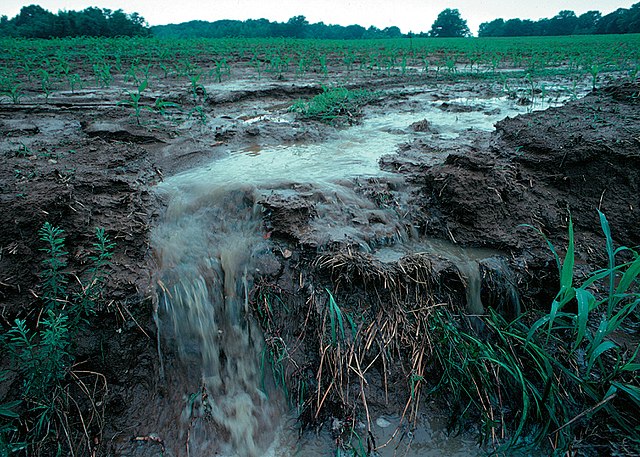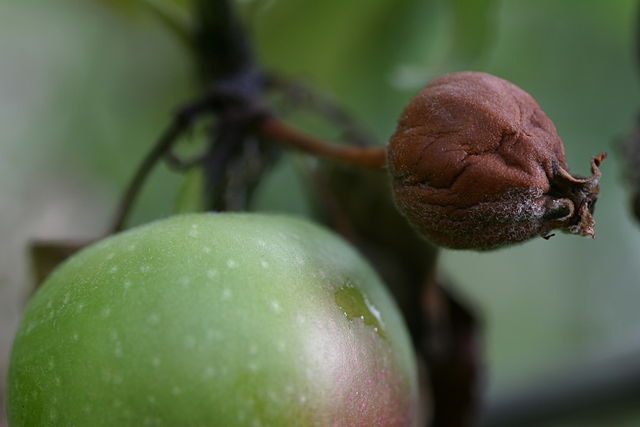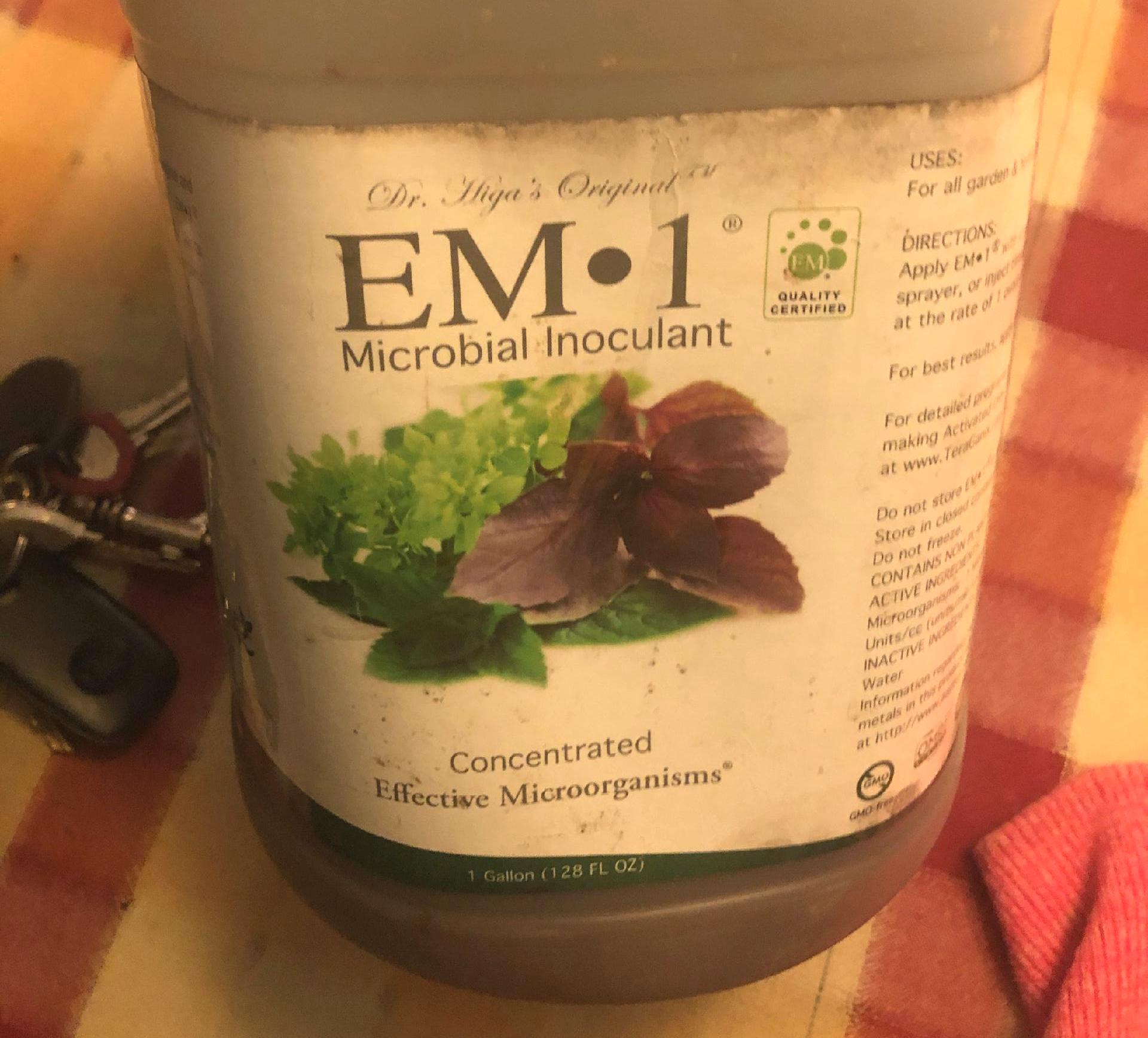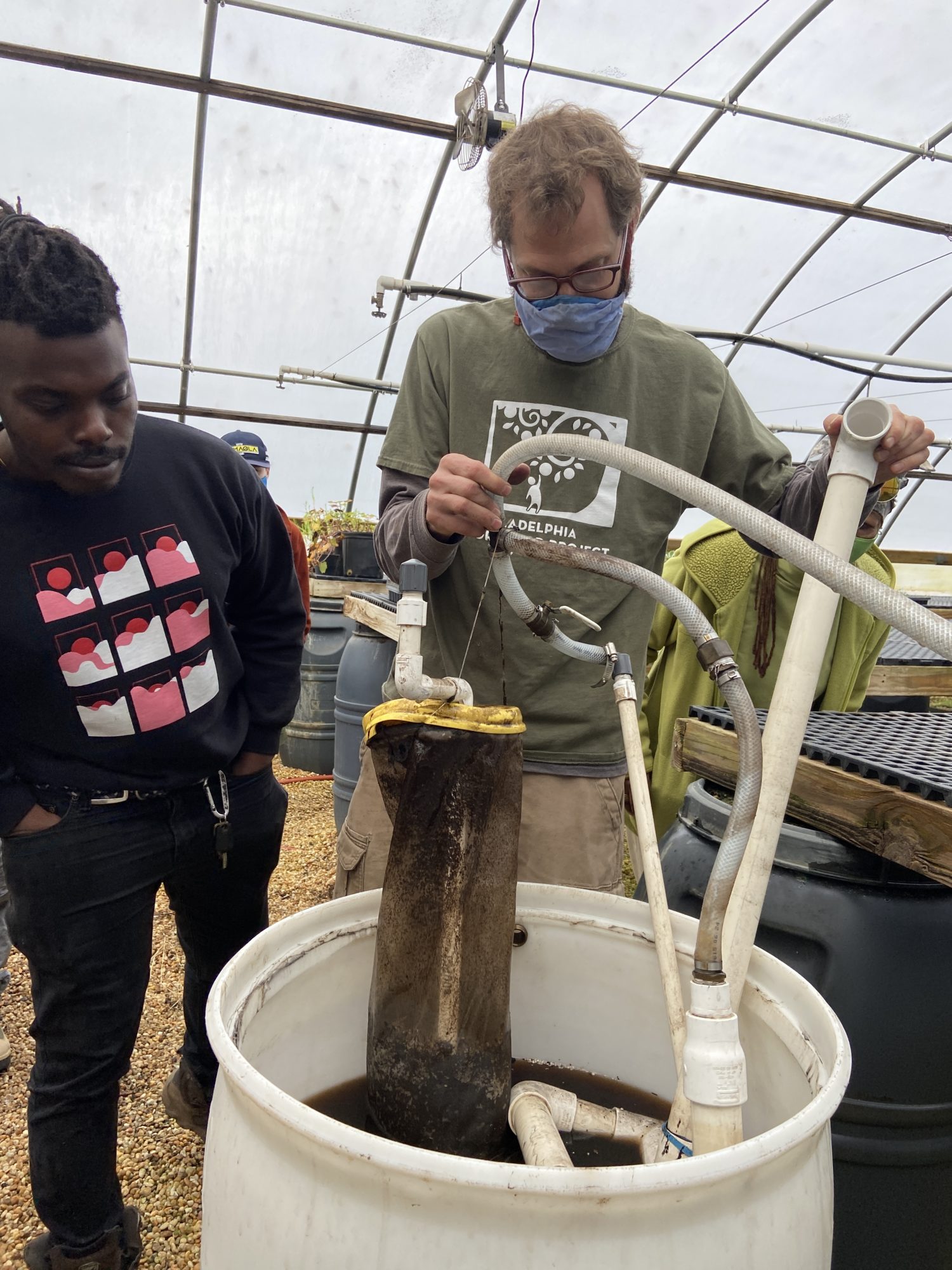The Story Behind EM
SOIL HEALTH IS PLANT HEALTH
Healthy soil is essential for maintaining healthy, bountiful gardens, orchards, and farms. Optimal soil health can be created by supporting and enhancing the soil microbe community and many growing challenges can be solved with a shifted focus from healing the plant to healing the soil. Promoting a lively, diverse soil habitat with beneficial soil organisms is key to having a healthy soil substrate. Healthy soil eliminates many pest and disease issues by improving plant resiliency, productivity, and overall health. Improving the health of your soil is a long term strategy for improving the yield of your growing space and minimizing the need for applications of fungicides and pesticides.

Photo Source: Alexandra on Flickr Commons
SYNTHETHIC CHEMICAL FERTILIZERS
The excessive use of chemical fertilizers has increased over time to meet the increasing food demand for an ever increasing population. The normalization of using chemical fertilizers has also affected the practices of home gardeners. It is often a lot easier to find chemical fertilizers than it is to find natural alternatives. Researchers, alongside farmers and gardeners, have been exploring more natural options for improving soil quality and improving plant health. Since the dawn of agriculture, people across the world have used natural soil treatments suited for their local environment and made up of locally available resources. These organic, natural treatments don’t depend on chemicals and are more environmentally and ecologically sound than the treatments that have been available to commercial farmers since the monopolization of U.S. farming. Commercial farmers have often only had the choice of expensive synthetic pesticides and fertilizers for their crops. These chemical treatments are not only bad for wildlife, the agricultural ecosystem, and surrounding ecosystems, but often result in polluted waterways from agricultural runoff. Today, growers are looking to be less chemically dependent through the use of more natural, safer treatments.

EFFECTIVE MICROORGANISMS
EM, also called Effective Microorganisms, is an all-natural alternative (or complimentary soil additive) to synthetic fertilizers. What is EM? It is basically a microbial inoculant– a community of helpful microbes— that is used to improve soils. The patented product EM-1 can be purchased and comes in a fermented liquid form, made up of a combination of yeast and two kinds of bacteria. You can also make your own version of EM. Completely non-toxic and all natural, it is used for plants, soil, ponds, and compost piles.
EM supposedly comes with a wide range of benefits for your soil and your plants. Its biggest strength is that it creates nutrient rich soil that ultimately leads to healthier crops, plants, and trees. EM improves soil structure and drainage, promotes plant health and growth, improves nutrient absorption, speeds up decomposition, and increases soil fertility. Its added benefit is that it eliminates odors, so can be used in compost piles to get rid of any bad smells. EM relies on biology rather than chemicals to improve the soils.
HISTORICAL ROOTS OF EM
Using microbial cultures to improve soils is nothing new and has been used by farmers for generations. EM-1, as a product, has only been around for 60 or so years. It was initially discovered in the mid-1960’s in Okinawa, Japan by Dr. Teruo Higa. At that time, many labs across the world were studying microorganisms, but most research was focused on single strains. Higa got experimental and mixed different strains to make combined cultures. On his way out before leaving for a long vacation, he tossed one of his mixtures onto a grass patch. Supposedly, when he returned from his trip, he noticed that the grass patch had grown considerably taller and fuller. He embarked on a many-years-long journey experimenting with the culture, ultimately finding the optimal combination. This mixture became known as EM, an acronym for “Effective Microorganisms”.
RESEARCH
To date, there is fairly limited published research on EM and its effects on plant health and crop productivity. However, there have been some recent studies that have shown the success of EM-1. There was a study published in the Journal of the University of Duhock in 2020 that focused on the effect of EM-1 fertilizers on the growth and yield of two cucumber cultivars. There were no significant effects on the vegetative qualities of the cucumbers, but there was an increase in the weight and yield of the two cucumber cultivars (Rasheed, S. et al. 2020, 78-89). Additionally, a 2013 study found in the European J. of Plant Pathology concerning lactic acid bacteria and fire blight claims that lactic acid bacteria (L. planatarum) are effective in preventing fire blight on pear trees and have potential to be used as ingredients for microbial biopesticides for fire blight control (Rosello, G et. al, 2013, 621-633). These are promising results that make a case for the addition of beneficial microbes in your growing space.

Photo Source: Sebastian Stabinger on Wikimedia Commons
ORCHARD APPLICATIONS
EM-1, the commecially available product, can be purchased and immediately sprayed onto your trees in the late fall or early spring. However, this can be expensive, so there are other solutions! There is a way to make your own EM blend at home. There are a few ways to go about this.
Homemade Mother Culture Recipe
If you are wanting to be more self-sufficient and cost-effective, you can attempt to make your own EM mother culture. This is a longer process and requires a somewhat sterile environment, but can be very rewarding! There are a few different recipes to choose from, but down below is a simple recipe.
Ingredients
- water or milk
- a starch source, primarily rice
- a food source for the bacteria living on the rice grains, primarily sugar or blackstrap molasses
Instructions
- Pour rice and water into a jar, shaking it, strain it, and place a cap on loosely
- Store it for a week
- Sift off top layer and strain liquid, and add milk to the solution with a ratio of 1 park rice water to 10 parts milk
- Let it sit for another week with a loosely fitted cap
- Sift off the curd on top and add blackstrap molasses to feed bacteria and you’re done!
Notes: You can store the mother culture in the fridge for 6 months. This blend can be poured into a backpack sprayer, handheld sprayer, or even a small spritzer if that is all you have, and sprayed on the trees. Ideally, you would want to do an even coverage of the soil at the base of the tree, trunk and branches, but if you don’t have the time or ability to do that, no need to fret! Even just adding it on the lower portion of the tree and the surrounding soil will help your tree. It is recommended to spray in the fall or spring. A more detailed description on the ingredients and process can be found here:How to Make your Own EM Culture.

EM Recipe Using Purchased Mother Culture
For an easier time, a mother culture (EM) can be purchased online and then activated with blackstrap molasses, a food source for the bacteria.
Ingredients
- mother culture purchased online or at store
- blackstrap molasses
Instructions
- Combine 3/4 cup mother culture and 3/4 cup blackstrap molasses, with a ratio of 1 to 1
- This solution should be mixed together and kept in a warm environment
- After 8 days, this blend can be applied to the soil and trees
Notes: Spray it on the fallen leaves in the fall is especially good because it will help speed up decomposition and prevent many pathogens from overwintering in the leaves!
If you are wanting to purchase the mother culture, rather than make it, to make your own EM blend, it can be found online at Terragonics in Texas, SCD Probiotic in St. Louis, or Organic Approach in Lancaster, PA. EM-1, the patented product, can also be purchased at most plant centers or big box hardware stores or online.
HOLISTIC ORCHARD SPRAYS
There is another very effective way of boosting your fruit trees’ health and defense mechanisms that incorporates EM as part of a more comprehensive strategy to boost soil and arboreal ecologies. POP interviewed Michael Phillips, the author of The Holistic Orchard and creator of the holistic orchard spray, about the use of Effective Microbes in orchards shortly before his untimely passing in March 2022. Michael made it clear that there are many different ways to go about your EM batch, but that it should always include a starch source, a food source for the bacteria, and nutrients to keep the bacteria happy and healthy.
Michael’s life’s work as an organic orchardist rests heavily on the idea of “competitive colonization”. In order to boost a tree’s defenses against pests and pathogens, you need to create an environment where the good bacteria outcompete the bad bacteria. A very effective way of creating this “competitive colonization” is with a holistic orchard spray formula , which is a specific type of EM blend that Michael Phillips developed after many years of research and experimentation at his Lost Nation Orchard. It involves more ingredients than just a basic EM blend, but is theoretically more effective at boosting your tree’s defense mechanisms and overall health. This is a good website for a detailed description for making your own Holistic Orchard Spray Recipe. Below are the ingredients and simplified instructions for holistic orchard spray:
Ingredients (for 4 gallon backpack sprayer)
- 6oz EM mother culture
- 0.5 cup blackstrap molasses
- 2.5 oz pure neem oil
- 1 tsp liquid dish soap
- 10oz unpasteurized liquid fish
- 5 oz liquid kelp (or seaweed extract)
- 4 gallons warm water
Instructions
- Combine the ingredients listed above and mix together
- Pour into backpack sprayer or handheld sprayer
- Spray on the soil, trunk, branches, and buds on your tree till it’s dripping
- This should be done twice for each tree to ensure good coverage
- First application should be timed to bud break in spring, repeated 3 more times at approximate 2 week intervals (avoid spraying during active bloom)
- A fall application after most leaves have dropped is also recommended

CO-EVOLUTION OF PLANTS AND MICROBES
Using EM is just one of the many ways to boost the vitality of your soil and plants. It is important to acknowledge the power behind plant and microbial symbioses and how those relationships have evolved for millions of years. Tapping into the world of EM is a way for us humans to make use of a beneficial dynamic between plants and microbes that already happens so easily and naturally. We can be witnesses to a beautifully mysterious and functional natural phenomenon.
SOURCES
Study on Effect of EM1 Fertilizers on Growth and Yield of Two Cucumber Cultivars
Study on Control of Fire Blight on Apples and Pears with Lactic Acid Bacteria
How to Make your Own EM Culture
Holistic Spray Ingredients by Michael Phillips
The Holistic Orchard by Michael Phillips
Myccorhizal Planet by Michael Phillips
This blog post was prepared by POP Orchard Assistant, Simone Shemshedini.
SUPPORT US! If you found this entry useful, informative, or inspiring, please consider a donation of any size to help POP in planting and supporting community orchards in Philadelphia: phillyorchards.org/donate.